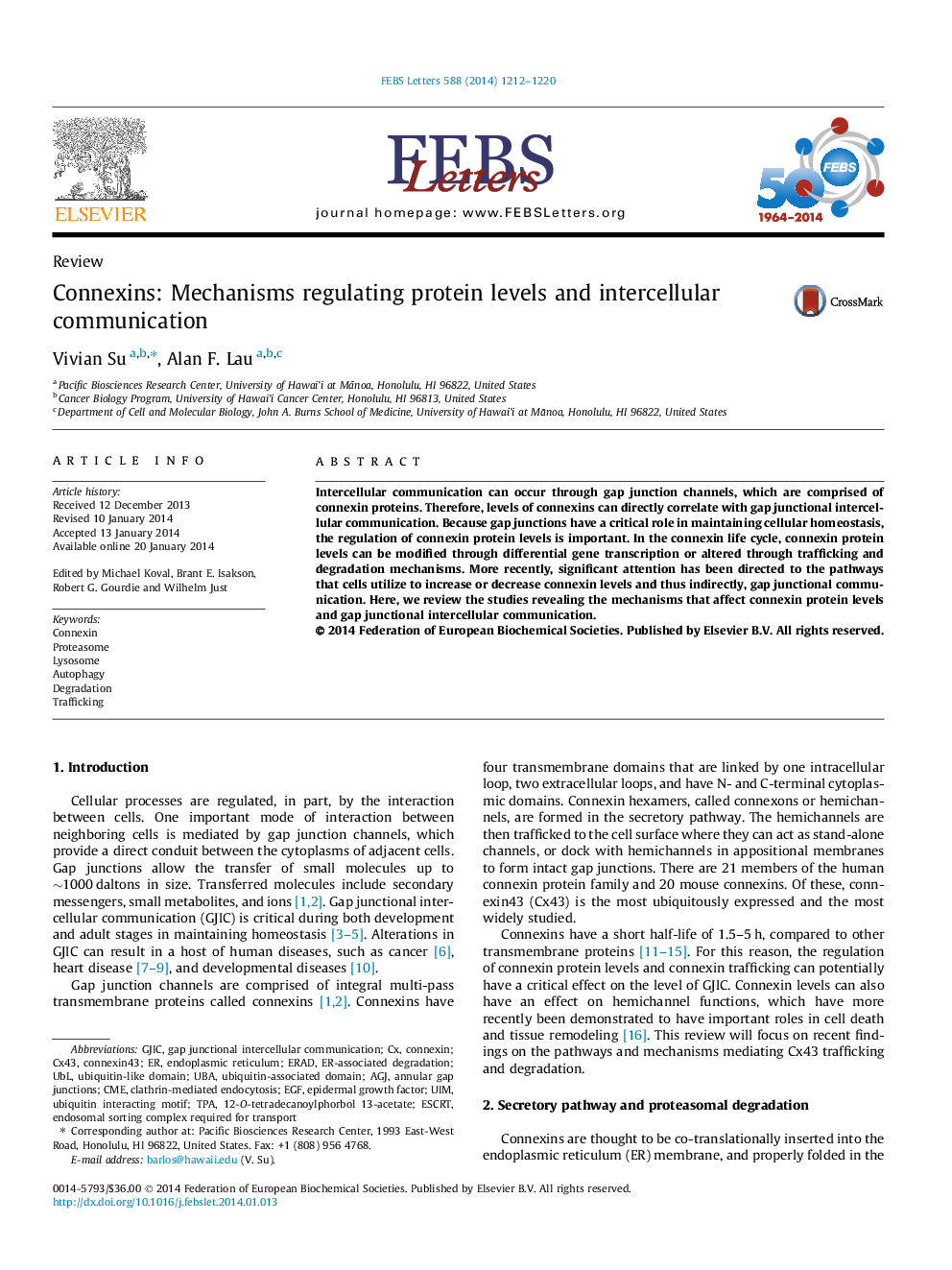| Article ID | Journal | Published Year | Pages | File Type |
|---|---|---|---|---|
| 10870675 | FEBS Letters | 2014 | 9 Pages |
Abstract
Intercellular communication can occur through gap junction channels, which are comprised of connexin proteins. Therefore, levels of connexins can directly correlate with gap junctional intercellular communication. Because gap junctions have a critical role in maintaining cellular homeostasis, the regulation of connexin protein levels is important. In the connexin life cycle, connexin protein levels can be modified through differential gene transcription or altered through trafficking and degradation mechanisms. More recently, significant attention has been directed to the pathways that cells utilize to increase or decrease connexin levels and thus indirectly, gap junctional communication. Here, we review the studies revealing the mechanisms that affect connexin protein levels and gap junctional intercellular communication.
Keywords
EGFubiquitin interacting motif12-O-tetradecanoylphorbol 13-acetateUIMUBAESCRTConnexin43GJICUbltPAERADCX43CMEAutophagygap junctional intercellular communicationClathrin-mediated endocytosisER-Associated DegradationDegradationUbiquitin-like domainUbiquitin-associated domainendoplasmic reticulumepidermal growth factorTraffickingLysosomeendosomal sorting complex required for transportProteasomeconnexin
Related Topics
Life Sciences
Agricultural and Biological Sciences
Plant Science
Authors
Vivian Su, Alan F. Lau,
